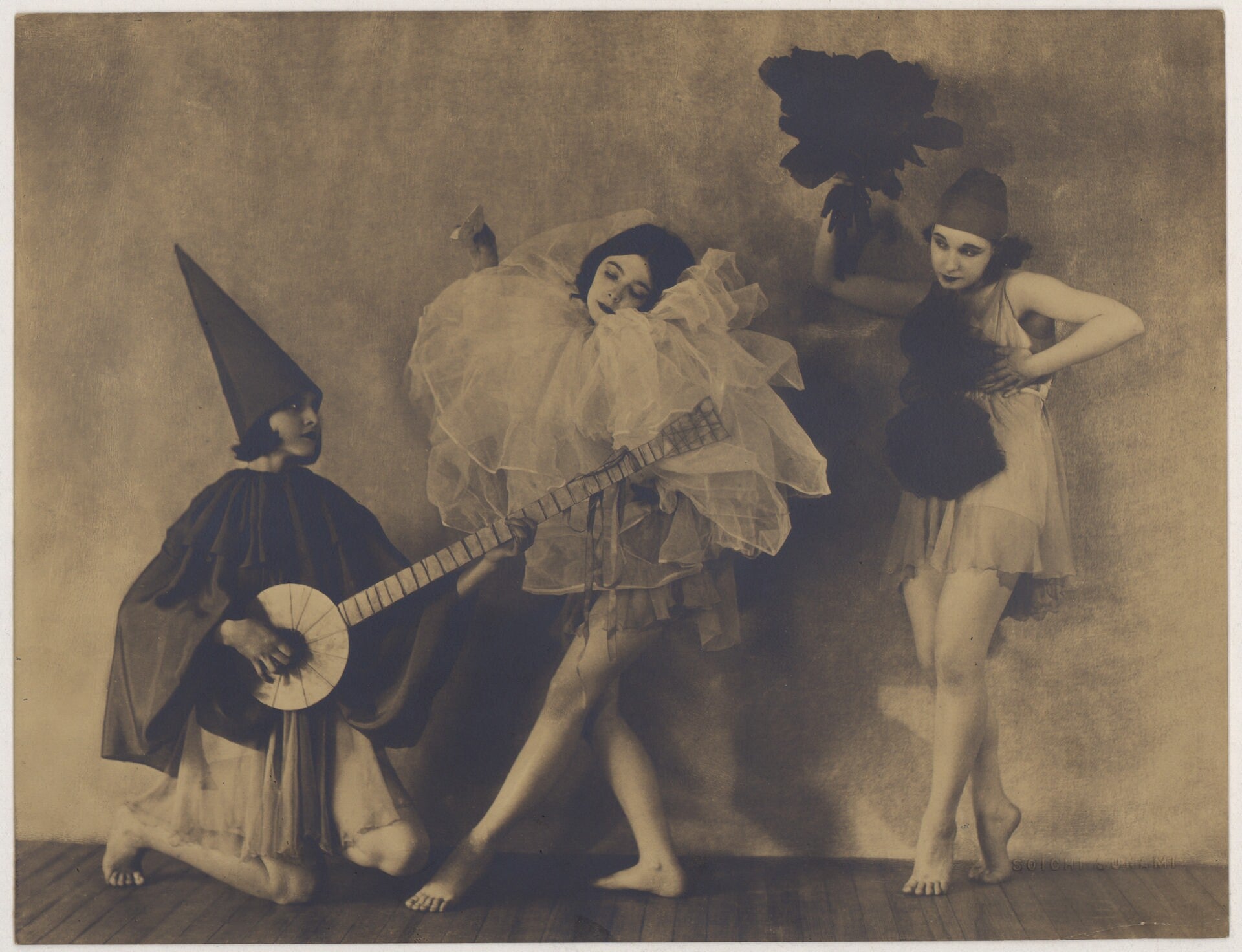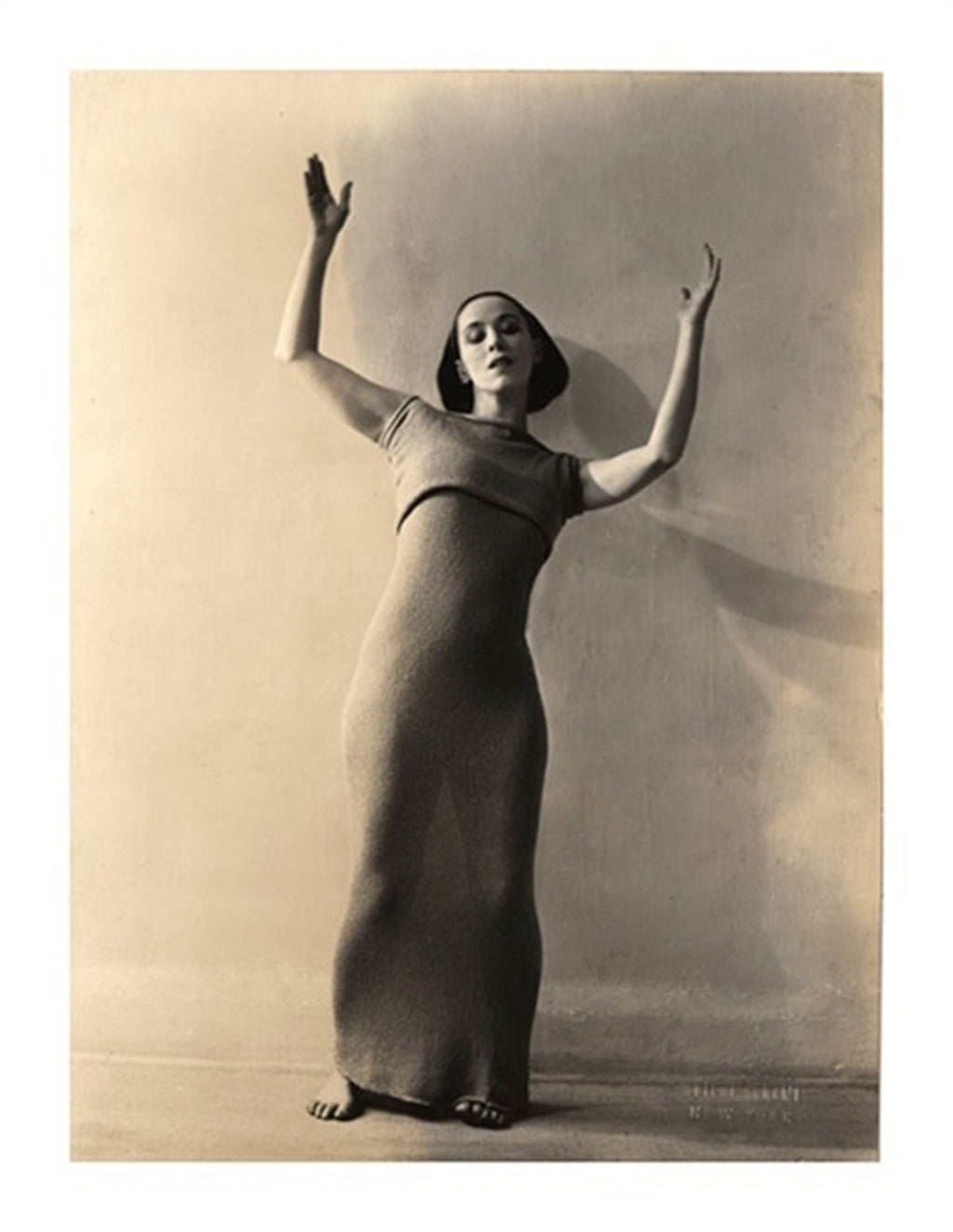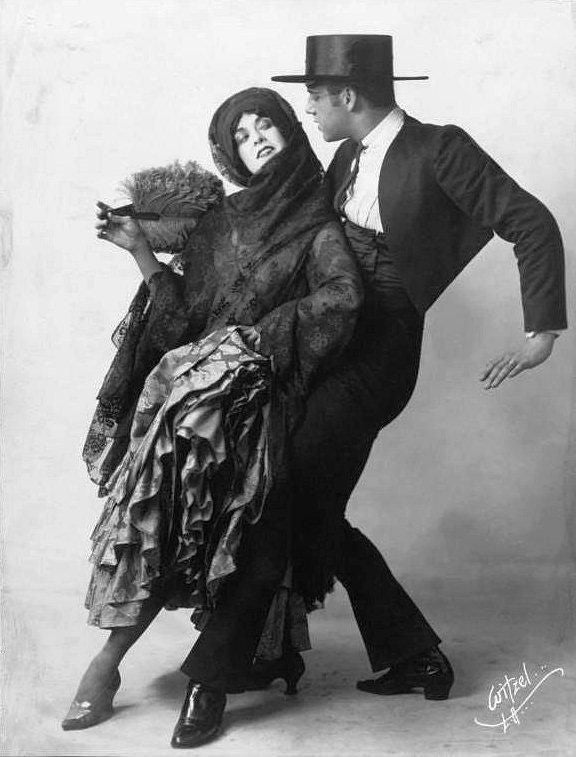The close reads of Graham’s dances are something I know I will return to again and again, for they are their own masterclass in evocation. From her fantastic blow-by-blow of fabric manipulation in “Lamentation” to a two-page recreation of the Graham class, Jowitt keeps the reader in the present tense of that moment. (This immediacy also lets her place some of Graham’s less savory moments of appropriation, minstrelsy, and Orientalism, in the context of those specific times.) Jowitt excels in reimagining elements of lost works that only exist in images or notes, and repeatedly, in her effort to distill Graham’s vast canon, she crystallizes that which is most ephemeral.
In a passage about “Dark Meadow,” she writes:
“The movements that Graham devised for these celebrants, if performed by only one couple, might look explicitly sexual; with four pairs moving in unison, they become sacramental—formal and beautiful—the dancers’ limbs interlocking with angular clarity. The men lift their partners onto one shoulder as if they’re plunder to be carried away, but they also sit and, swaying slightly, anchor the standing women who lean away from them, aslant like ships’ figureheads, then fall back to sit on their partners’ bent knees.”
Later, in writing about “Diversion of Angels,” she grapples with the Woman in White, that “seems to be recalling the earlier phases of love in her [Graham’s] life,” in a direct appeal:
“Consider this. The man lies on his back, and supported by his lifted arms, the woman kneels on his bent knees to hover over him. When she rises, he rolls onto his belly, raising his flexed feet behind him and arching his upper body off the floor, his hands locked behind his head. She steps carefully onto his thighs and sits on the stool created by his feet, gazing around her. This image (surely arduous for him to maintain) implies that he’s on a boat on which she may consider taking a journey. But she steps off to gaze at something in the distance, and the dance goes on.”
I have seen Martha Graham Dance Company perform both of these passages in recent times and have written about them in this publication. No matter. Reading these words delivers two simultaneous thoughts: one, that perhaps I have not really seen them at all and two, I am anxious to see them again.












comments